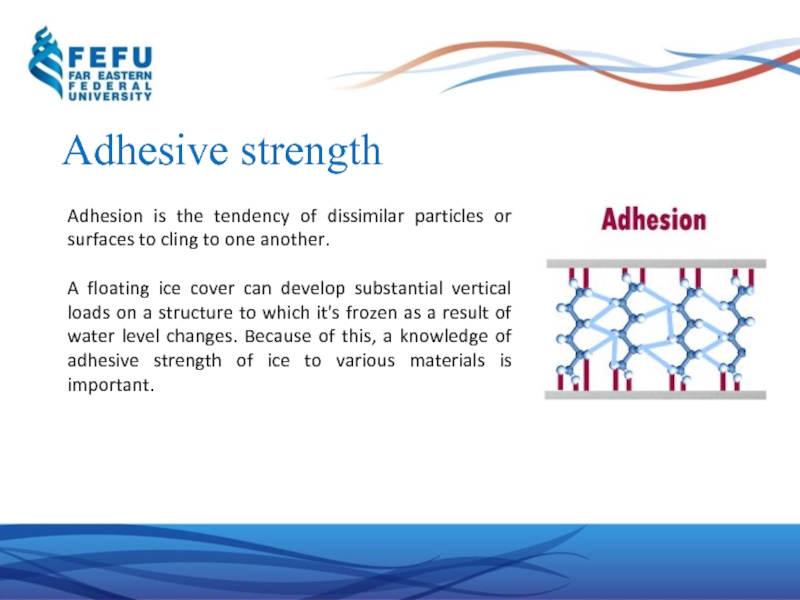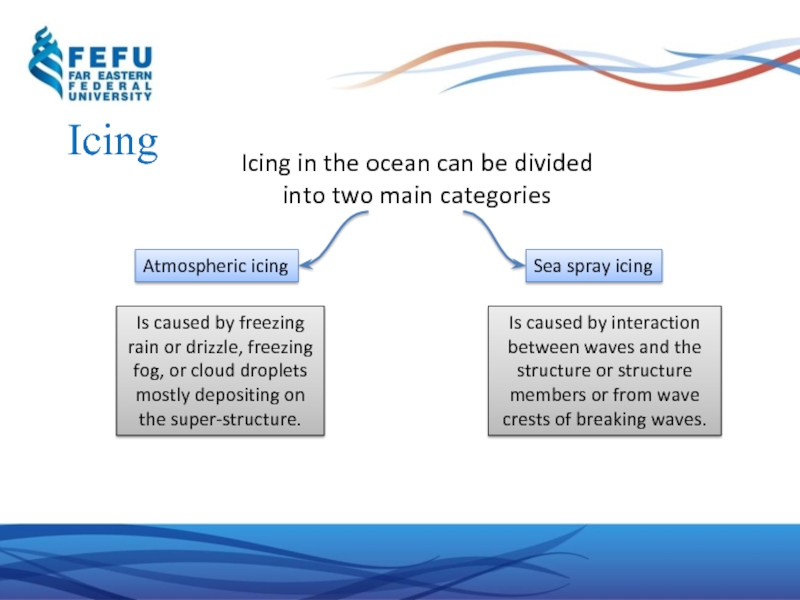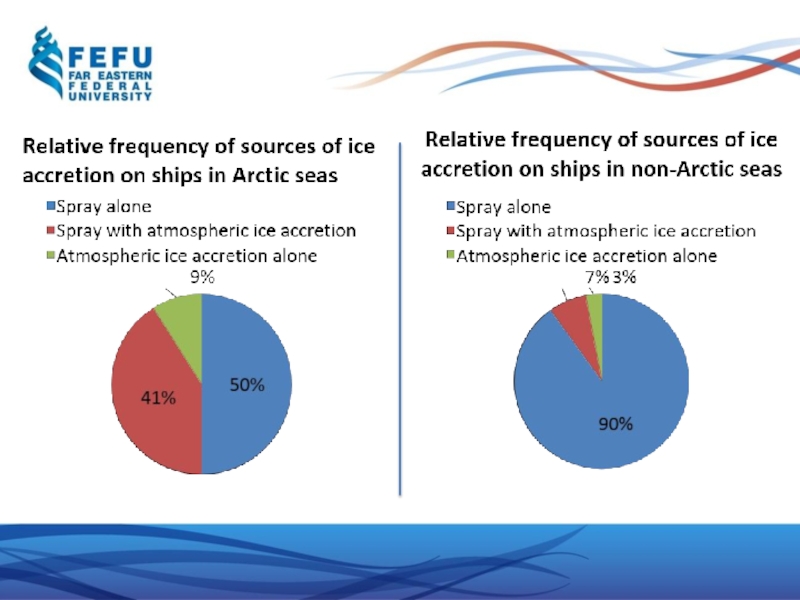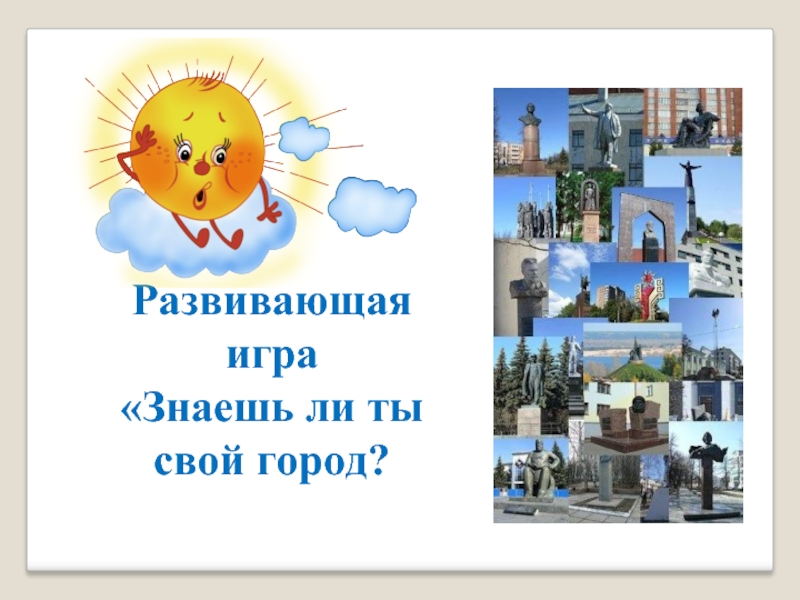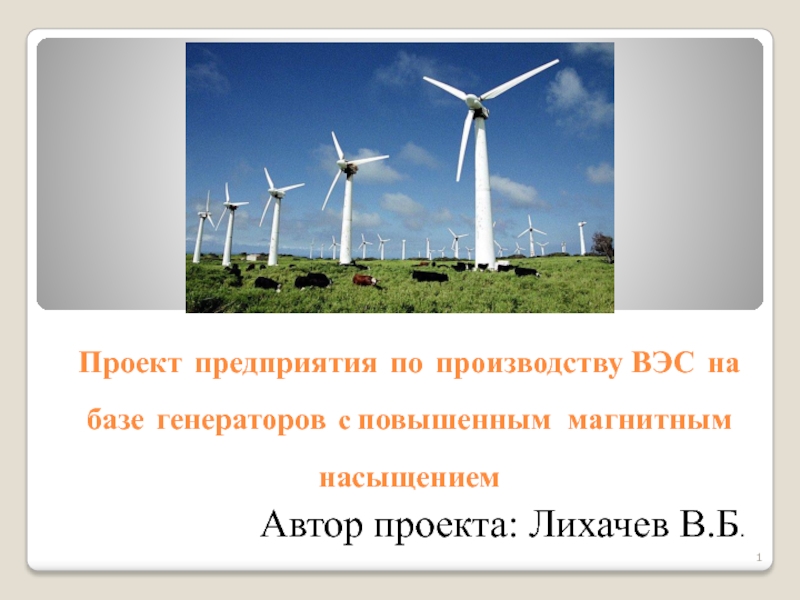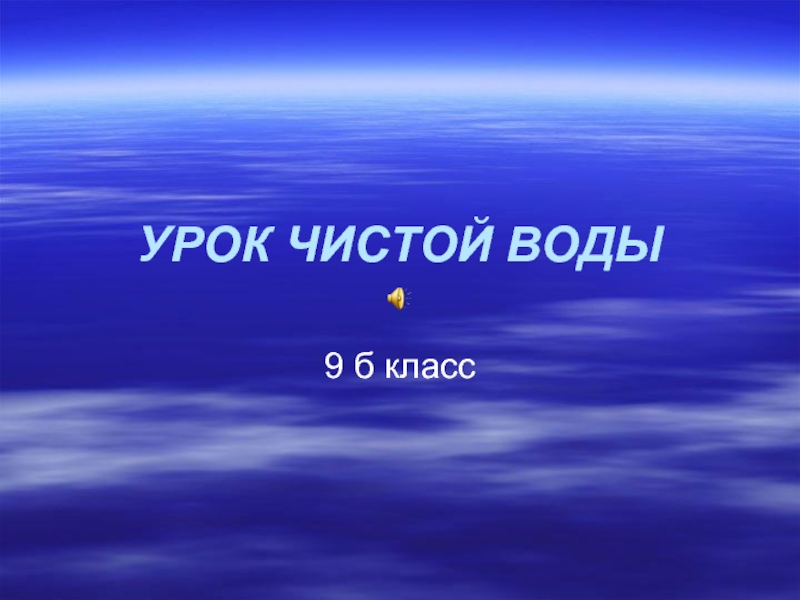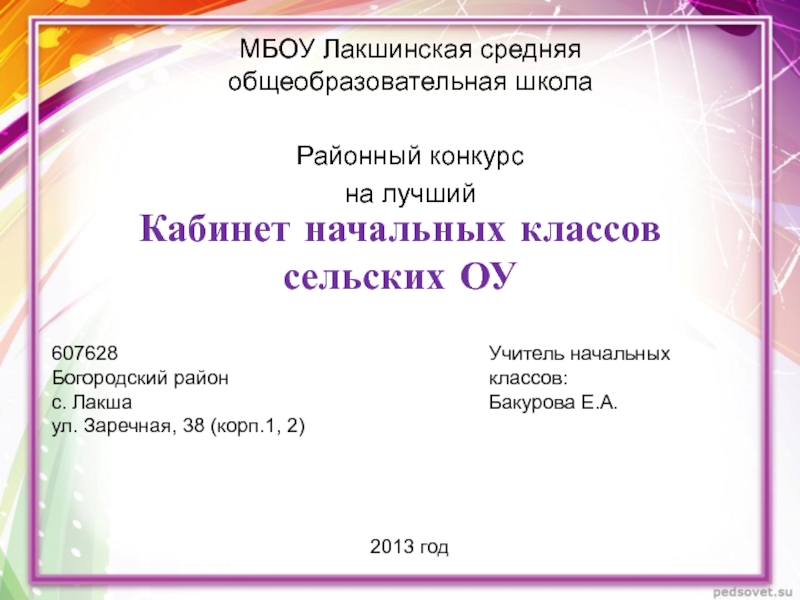- Главная
- Разное
- Дизайн
- Бизнес и предпринимательство
- Аналитика
- Образование
- Развлечения
- Красота и здоровье
- Финансы
- Государство
- Путешествия
- Спорт
- Недвижимость
- Армия
- Графика
- Культурология
- Еда и кулинария
- Лингвистика
- Английский язык
- Астрономия
- Алгебра
- Биология
- География
- Детские презентации
- Информатика
- История
- Литература
- Маркетинг
- Математика
- Медицина
- Менеджмент
- Музыка
- МХК
- Немецкий язык
- ОБЖ
- Обществознание
- Окружающий мир
- Педагогика
- Русский язык
- Технология
- Физика
- Философия
- Химия
- Шаблоны, картинки для презентаций
- Экология
- Экономика
- Юриспруденция
Ice mechanics. Ice interface properties презентация
Содержание
- 1. Ice mechanics. Ice interface properties
- 2. Contents
- 3. Interface properties This class of property that
- 4. Adhesive strength Adhesion is the tendency of
- 5. Adhesive strength There’re different methods for evaluating
- 6. Icing Icing is ice growth occurring when
- 7. Icing Is caused by interaction between waves
- 9. Icing Ice accretion on fixed or floating
- 10. Thanks for attention!
Слайд 3Interface properties
This class of property that relates to the behaviour at
The properties are commonly known as:
adhesion,
friction,
icing, etc.
Слайд 4Adhesive strength
Adhesion is the tendency of dissimilar particles or surfaces to
A floating ice cover can develop substantial vertical loads on a structure to which it's frozen as a result of water level changes. Because of this, a knowledge of adhesive strength of ice to various materials is important.
Слайд 5Adhesive strength
There’re different methods for evaluating ice adhesive strength. One of
Ice adhesion test setup
adjustment of mould and corresponding frozen-in pin at tensile testing machine
sketch of the ice adhesion test setup
Слайд 6Icing
Icing is ice growth occurring when impinging liquid droplets freeze on
The potential for ice accretion on offshore structures and vessels is directly related to the environmental conditions:
• air temperature,
• wind speed/direction,
• wave height,
• sea-surface temperature.
Слайд 7Icing
Is caused by interaction between waves and the structure or structure
Is caused by freezing rain or drizzle, freezing fog, or cloud droplets mostly depositing on the super-structure.
Icing in the ocean can be divided into two main categories
Atmospheric icing
Sea spray icing
Слайд 9Icing
Ice accretion on fixed or floating offshore structures is a potential
For ground-based structures, heavy ice accretion can be a serious concern because of the increased size of the structural members. This can lead to higher lateral wave and wind forces than anticipated.
For floating structures and vessels, the effects are more serious, in that ice accretion can increase the draught, reduce the freeboard, and raise the centre of gravity of the structure/vessel, thereby compromising stability.



